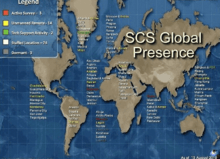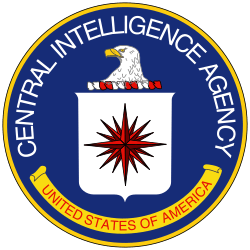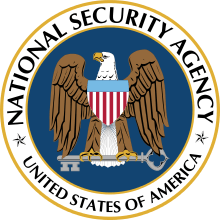Special Collection Service


The Special Collection Service (SCS) is a highly classified joint U.S. Central Intelligence Agency-National Security Agency program charged with inserting eavesdropping equipment in difficult-to-reach places, such as foreign embassies, communications centers, and foreign government installations. Established in the late 1970s and headquartered in Beltsville, Maryland, the SCS has been described as the United States' "Mission Impossible force". The SCS has been involved in operations ranging from the Cold War to the Global War on Terrorism.
According to documents leaked by Edward Snowden, the SCS is part of a larger global surveillance program known as STATEROOM.[1]
Mission
The SCS is a U.S. black budget program[2] that has been described as the United States' "Mission Impossible force", responsible for "close surveillance, burglary, wiretapping, breaking and entering".[3][4][5][6] It is headquartered in Beltsville, Maryland, in an obscured building that was at one time labeled simply "CSSG". Next door is the U.S. Department of State's Beltsville Messaging Center, to which the SCS is linked via fiber optic cable. The SCS is jointly staffed by the Central Intelligence Agency (CIA) and the National Security Agency (NSA).[6][7][8] SCS operatives are based out of U.S. embassies and consulates overseas, and operatives often use Foreign Service or Diplomatic Telecommunications Service cover when deployed.[6][9][10] Their mission is to intercept sensitive information on espionage, nuclear arms, terrorist networks, drug trafficking and other national-security-related issues.[3]
The SCS was established to overcome a problem in that the NSA typically intercepts communications "passively" from its various intercept facilities throughout the world, yet the increasing sophistication of foreign communications equipment renders passive interception futile and instead requires direct access to the communications equipment. The CIA, meanwhile, has access to agents specializing in clandestine operations and thus is more able to gain access to foreign communication equipment, yet lacks the NSA's expertise in communications eavesdropping. Hence, the SCS was born, combining the communications intelligence capabilities of the NSA with the covert action capabilities of the CIA in order to facilitate access to sophisticated foreign communications systems.[3][11][12]
The SCS employs exotic covert listening device technologies to bug foreign embassies, communications centers, computer facilities, fiber-optic networks, and government installations.[3][4] The U.S. government has never officially acknowledged its existence, and little is known about the technologies and techniques it employs.[3] The sole inside account of SCS comes from a Canadian, Mike Frost, whose 1994 book Spyworld revealed that the program was known to insiders at the time as "College Park".[13] As of 2008, the SCS is reported to target for recruitment key foreign communications personnel such as database managers, systems administrators, and information technology specialists.[14]
History
Cold War
The SCS program was established in the late 1970s during the Cold War between the United States and the Soviet Union.[3][13] Around this time, SCS operatives reportedly hid eavesdropping devices in pigeons perched on the windowsills of the Soviet Embassy in Washington, D.C.[6]
Expansion
As encryption technology increased in sophistication, by the end of the 20th century many coded signals proved unbreakable. Due to this problem, bugging techniques and technologies saw a revival: unable to easily intercept and decrypt foreign communications through passive means, the U.S. government needed to instead intercept the communications at their source, and thus the SCS program was expanded in the 1990s to fulfill this need.[15][16][17]
Infiltration
The SCS program was compromised by infamous Federal Bureau of Investigation (FBI) mole Robert Hanssen in the 1990s, which provided Moscow with sensitive information about highly sophisticated U.S. overseas bugging operations.[4][18] However, the program was so secret that, after Hanssen's arrest, the FBI would only describe it in general terms, as a "program of enormous value, expense, and importance to the U.S. government".[3][5]
Afghanistan
In 1999, as the Clinton Administration sought to kill Osama bin Laden following the 1998 U.S. embassy bombings, SCS operatives covertly entered Afghanistan to place eavesdropping devices within range of Al-Qaeda's tactical radios.[19]
China
The SCS was rumored to have been involved in the 2001 operation that planted 27 satellite-controlled bugs in the Boeing 767-300ER that was to be used as Chinese President Jiang Zemin's official jet. The bugs were discovered, however, before they could be switched on.[20]
Iraq
Prior to the 2003 U.S. invasion of Iraq, SCS was described as the "prime mover" of electronic surveillance in the country.[21] SCS operatives built numerous antennae, spaced throughout the Iraqi countryside, capable of intercepting Iraqi microwave communications. These Iraqi communications would have been otherwise difficult to intercept, because they beamed hilltop to hilltop in a narrow band, with an angle too oblique and thus too dissipated to be intercepted by air or spacecraft.[22]
In 1998, the U.S. government recruited an Australian operative under SCS and deployed him to Iraq. The operative reported concerns about what was transpiring in Iraq, in that there was "a very high volume of data, and that he was getting no feedback about whether it was good, bad, or useful". He further reported that "this was a massive intelligence collection operation—one that was not in accordance with what UNSCOM was supposed to be doing" at the time.[21]
After the invasion, SCS operatives were employed in the hunt for Saddam Hussein, planting sophisticated eavesdropping equipment in target areas to intercept communications that were then analyzed by voice analysis experts.[23][24]
War on Terror
The SCS was heavily involved in eavesdropping to advance the Global War on Terrorism, setting up eavesdropping posts around Middle Eastern capitals and figures close to Osama bin Laden's terrorism network.[6][25]
When the United States zeroed in on Osama bin Laden's compound in Abbottabad, Pakistan, SCS operatives established a base in an apartment that the CIA had rented a mile away from the compound. They focused lasers on the compound windows and, by analyzing the vibrations, were able to count the number of people inside and outside, and also ascertained that there was one person who never ventured outside the compound. Bin Laden was killed inside the compound during a raid by U.S. special forces on May 2, 2011.[26][27]
International criticism
During October 2013, reports by former NSA contractor Edward Snowden led to the unveiling of the SCS having systematically wiretapped Chancellor of Germany Angela Merkel's private cell phone over a period of over 10 years, which among other activities to wiretap and systematically record large amounts of European and South American leaders' and citizens' communication by the NSA led to a distinct diplomatic backlash at the United States government.[28]
See also
External links
- "Link" (PDF). Pacific SIGDEV Conference March 2011 – Special Collection Service powerpoint presentation
References
- ↑ Laura Poitras, Marcel Rosenbach and Holger Stark. "Codename 'Apalachee': How America Spies on Europe and the UN". Der Spiegel. Retrieved 22 December 2013.
- ↑ Classification Guide 356-01 Accessed 27 October 2013
- 1 2 3 4 5 6 7 Lichtblau, Eric (February 28, 2001). "Spy Suspect May Have Revealed U.S. Bugging; Espionage: Hanssen left signs that he told Russia where top-secret overseas eavesdropping devices are placed, officials say". Los Angeles Times. p. A1. Archived from the original on April 17, 2001.
- 1 2 3 Lathem, Niles (March 1, 2001). "Feds to Offer FBI 'Mole' Sing-or-die Deal". New York Post. p. 4.
- 1 2 Ann Curry (anchor), John Pike (guest), Pete Williams (guest) and James Bamford (guest) (February 27, 2001). "Congress to Hold Closed Hearings on Accused Spy Robert Hanssen Later This Week". Today. NBC.
- 1 2 3 4 5 Kaihla, Paul (November 2001). "Weapons of the Secret War". Business 2.0. Archived from the original on October 4, 2003.
- ↑ Pike, John (April 28, 1996). "CIA/NSA CSSG Special Collection Service, "Communiciations Support Group," 11600 Springfield Rd, Beltsville, MD". Federation of American Scientists. Archived from the original on August 3, 2001.
- ↑ Aid, Matthew (September 21, 2012). "The Spies Next Door: The Top 10 Beltway Intel Centers Hiding in Plain Sight". Foreign Policy. Retrieved 6 July 2014.
- ↑ Bamford, James (September 16, 2001). "Booknotes" (Interview). Interview with Brian Lamb. C-SPAN. Archived from the original on November 15, 2011.
- ↑ Pike, John (April 28, 1996). "State Department: Beltsville Communications Annex". Federation of American Scientists. Archived from the original on August 3, 2001.
- ↑ Isnard, Jacques (February 23, 2000). "Une alliance secrète entre la NSA et la CIA" [A Secret Alliance Between the CIA and the NSA]. Le Monde (in French).
- ↑ Bowman, Tom (July 18, 2002). "Report faults decisions by intelligence agencies; Management actions in allocating resources are blamed in Sept. 11". Baltimore Sun. p. 3A.
- 1 2 Roslin, Alex (October 6, 2001). "Cyberspies and saboteurs: Hackers on the payroll of U.S. security agencies". The Gazette. Montreal. p. A1. Archived from the original on December 16, 2001.
- ↑ Bamford, James (2008). The Shadow Factory: The Ultra-Secret NSA from 9/11 to the Eavesdropping on America. Knopf Doubleday Publishing Group. ISBN 9780385521321.
- ↑ Diamond, John (December 10, 1999). "To Catch a Spy Because the FBI Noted Inept Actions of a Russian Near the State Department, Espionage Was Uncovered". Chicago Tribune. pp. 1, 1:2.
- ↑ Loeb, Vernon (July 29, 2001). "Test Of Strength; For two years, Air Force general Michael Hayden has waged a secret struggle to overhaul the world's most powerful spy agency. Nothing's riding on his success but the future of America's national security". Washington Post Magazine. p. 9.
- ↑ Finder, Joseph (April 29, 2001). "Bugging the World". New York Times Book Review. p. 9.
- ↑ Masters, Brooke A.; Pincus, Walter (March 2, 2001). "Spy-Case Indictment Postponed; Two Sides Cooperating; Suspect Gets Access to Evidence". Washington Post. p. A8.
- ↑ Gellman, Barton (December 19, 2001). "Broad Effort Launched After '98 Attacks". Washington Post. p. A1.
- ↑ "Air turbulence a test for ties". South China Morning Post. January 24, 2002. p. 12.
- 1 2 Vest, Jason; Madsen, Wayne (March 2, 1999). "A Most Unusual Collection Agency". The Village Voice. Archived from the original on August 15, 2001.
- ↑ Gellman, Barton (April 27, 1999). "Barton Gellman: Interview". Frontline. PBS. Archived from the original on November 12, 2012.
- ↑ McDougall, Dan; Ward, Sharon (April 14, 2003). "Saddam may have fled as house of cards collapses". The Scotsman. p. 10.
- ↑ Thwaites, George; Thomas, Ian; Sanderson, Elizabeth; Patel, Pravina; Stewart, Will (April 13, 2003). "Has Moscow Saved Saddam? ; The War in Iraq as the Tyrant Continues to Evade Capture by Agents from Five Countries, Damning Evidence That the Russians Even Spied on Tony Blair to Help Iraqi Regime". Mail on Sunday. p. 6.
- ↑ Bamford, James (2007). Body of Secrets: Anatomy of the Ultra-Secret National Security Agency. Random House Digital. p. 647. ISBN 9780307425058.
- ↑ "Laden's killing: other side of the story". Assam Tribune. June 3, 2011.
- ↑ Calvert, Scott (May 8, 2011). "Listening for Bin Laden: the NSA's Intercept of a Phone Call by a Courier May Have Been a Key Piece of Evidence Leading to the Terrorist Leader's Compound". Baltimore Sun. p. A1.
- ↑ Embassy Espionage: The NSA's Secret Spy Hub in Berlin Der Spiegel, 27 October 2013
Coordinates: 39°02′42″N 76°51′25″W / 39.045°N 76.857°W

